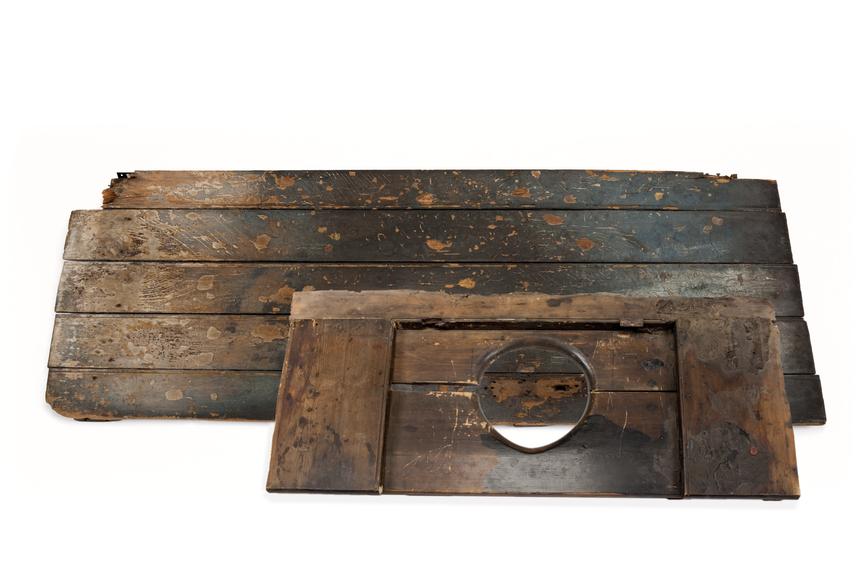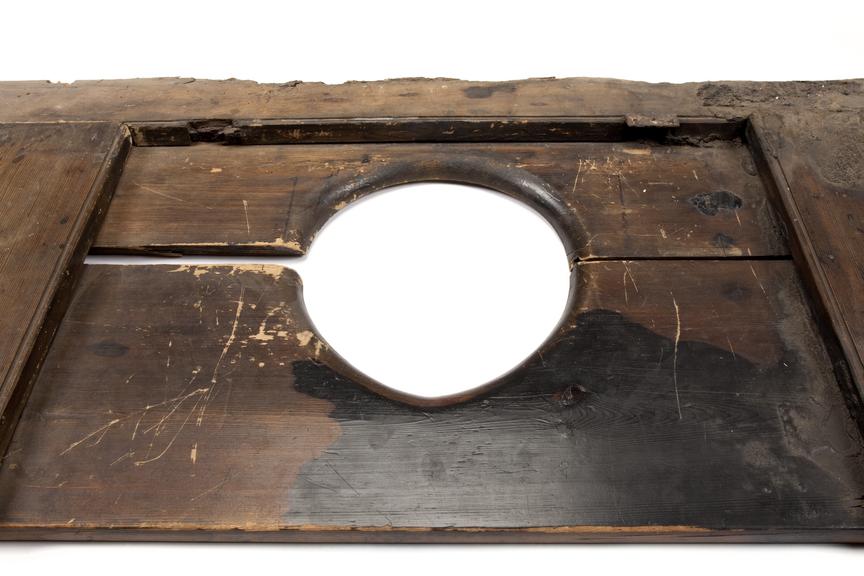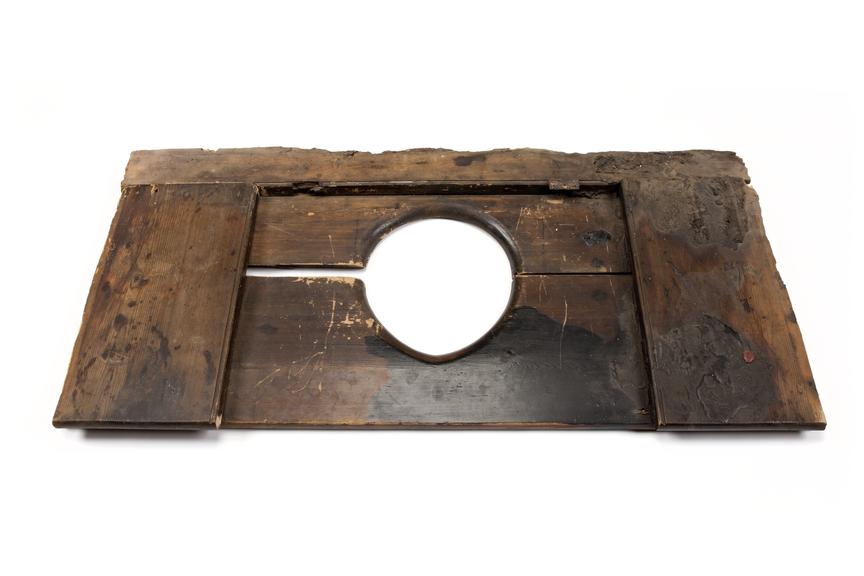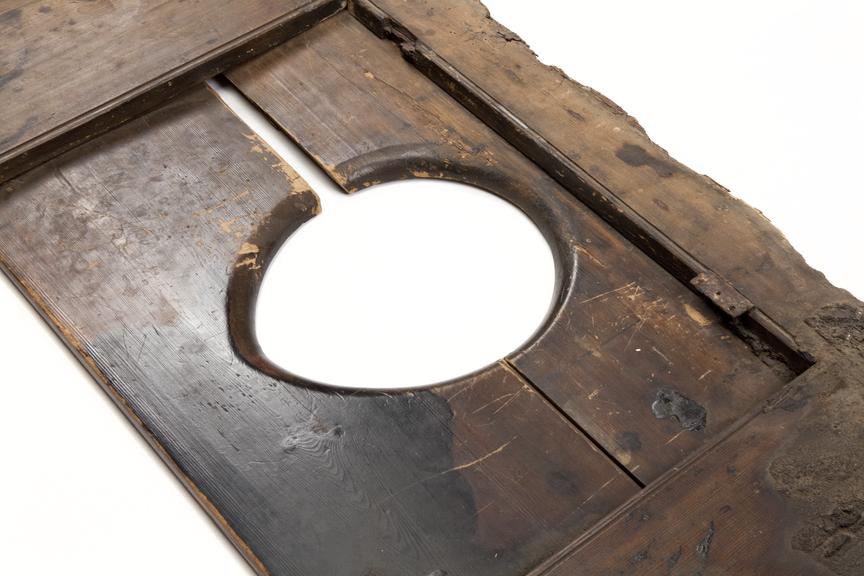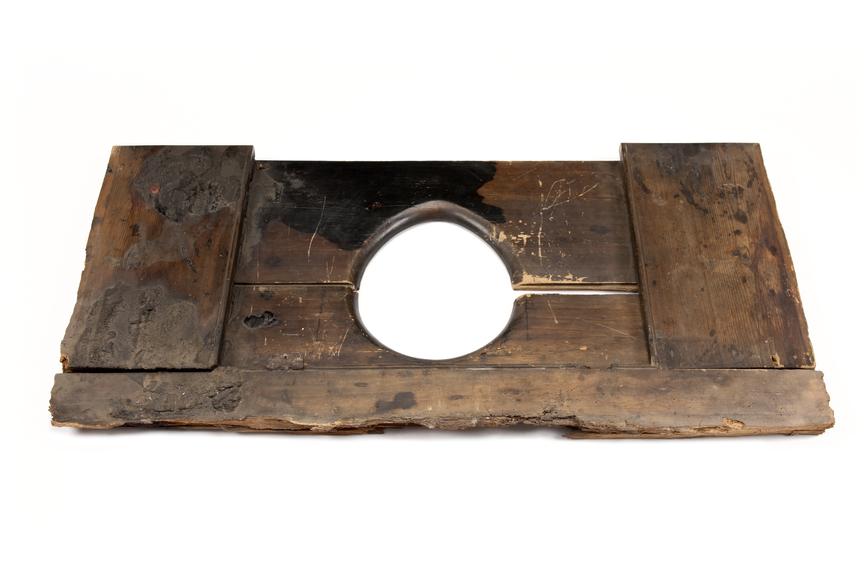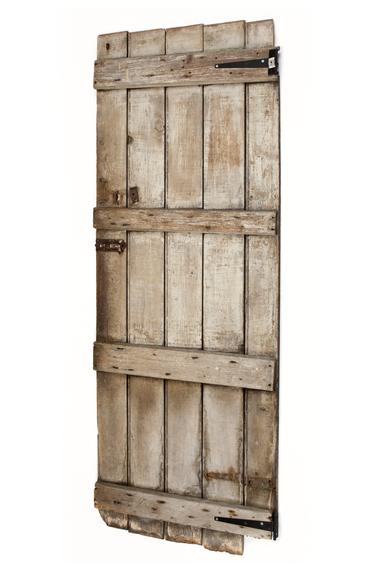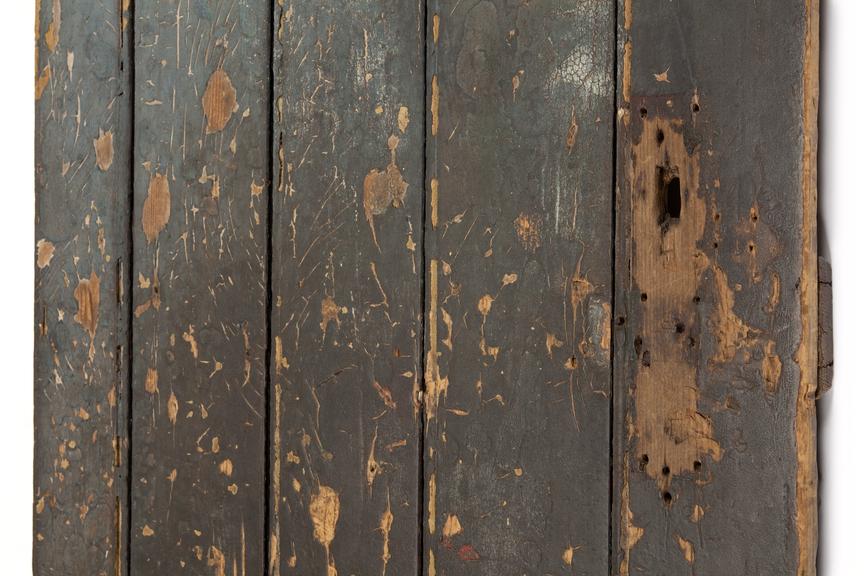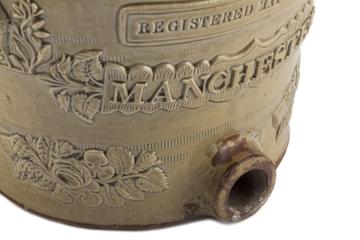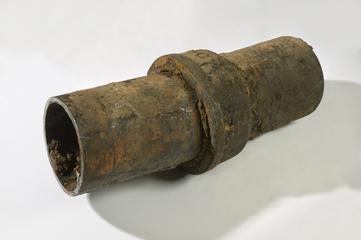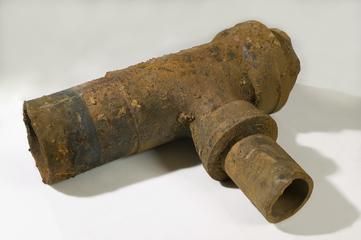Seat from outdoor privy
Seat from outdoor privy, about 1850-1900.
More
This privy seat may have been shared by as many as 30 families.
An outdoor privy midden was a toilet in a small hut consisting of a seat like this built over a pit. Human and household waste collected in the pit below and was taken away about twice a year. Middens often overflowed, causing the streets to run with urine and excrement. The sewage could also seep into the surrounding soil and contaminate the groundwater. Some of the pits did have pipes to take the waste away but these connected directly to rivers.
In Manchester, cramped, poor quality housing was built to accommodate the workers who flooded into the city during the Industrial Revolution. Often only one privy would be built to serve a whole row or court of these densely packed houses. Up to 30 families might have to share the same toilet.
Manchester gained a reputation as one of the most filthy, overcrowded and unhealthy places in Britain. Protests in the 1840s and 1850s forced local government to improve urban infrastructure like sanitation. The 1848 Public Health Act also drove change.
- Measurements:
-
overall: 1070 mm x 530 mm x 40 mm, 8 kg
- Materials:
- wood (unidentified)
- Object Number:
- 2016-2010 Pt1
- type:
- privy seat
- Image ©
- The Board of Trustees of the Science Museum
